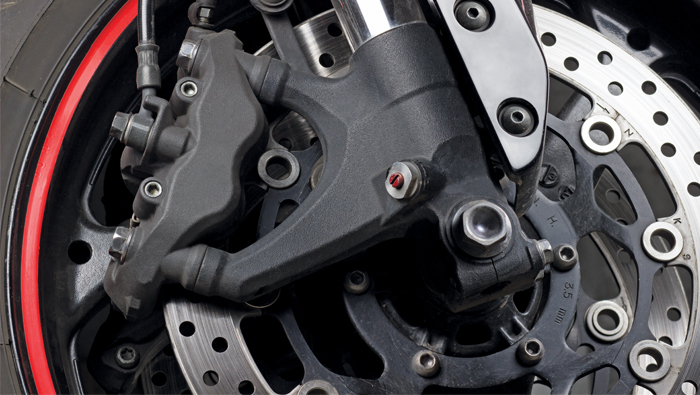
Modern hydraulic brakes, as the name suggests, work on the principle of fluid pressure. When you squeeze your lever or stomp your pedal, a linkage connects to your master cylinder’s piston and exerts force on the juice within — brake fluid. The pressure expands equally in all directions, and the most movable item moves, which is the caliper piston. The expansion clamps the pads against the rotors, dragging the movement to a halt.
The biggest enemy of the pressurised braking mechanism is air. Seeping of air into the system could lead to sudden failure of the entire braking mechanism, resulting in unfortunate situations. If there’s air in the lines, the pistons don’t budge on engaging the brake lever/pedal, due to lack of enough pressure. To solve the situation, the process of bleeding is to be undertaken — bleeding — the process of chasing the air out and sealing the system once again.
If your brake’s feel “soft” or “squishy” or totally lack the braking power, here is what you need to do: Pump up the brake to achieve pressure, open the bleeder without releasing the brake to expel air (you will see bubbles coming out), close the bleeder, and allow the pedal/lever to return to its resting position. Repeat until the brakes have good feel (the same pressure on the brake lever that normally used to be).
The process is fairly straightforward and easy. A few things to keep in mind while bleeding out the brakes;
Start bleeding at the farthest port from the master cylinder: For dual-disc front brakes, that usually means the left front caliper.
Brakes are a sealed system: If you are losing brake fluid regularly, something is wrong and needs more attention than a simple bleeding job.
Don’t add fluid helter-skelter: The fluid level in the reservoir (on the left handle bar) drops as the pads wear. Low oil level in fact indicates – if all else is well; that it’s time for a brake change, and not fluid top-up. When you put new brakes, the oil level comes back to full level.
Keep the master cylinder full: Forget this rule, and air will get sucked into the fluid as you pump the brakes. You will then have to start all over again.
Use the right fluid: A lot of fluid flavours out there – be sure you only put the recommended fluid with the correct formulation and boiling point.
Swap fluid the easy way with extended bleed: Bleed out as much fluid from the master cylinder as you can without going dry and refill. Repeat once or twice.
Cover up: Brake fluid kills paint. Cover the bike’s painted parts and other nearby shiny bits.